Complete Solutions to EXAMPLE of chapter AREAS OF TRIANGLES AND QUADRILATERALS of Class 9 book with complete answers and questions
| Class 9 | MATHS |
| Chapter | AREAS OF TRIANGLES AND QUADRILATERALS |
| RS AGGARWAL | EXAMPLE |
| Number Of Questions | 6 |
| Academic Year | 2023-24 |
The adjacent sides of a parallelogram ABCD are AB = 34 cm, BC = 20 cm and diagonal AC = 42 cm. Find the area of the parallelogram.
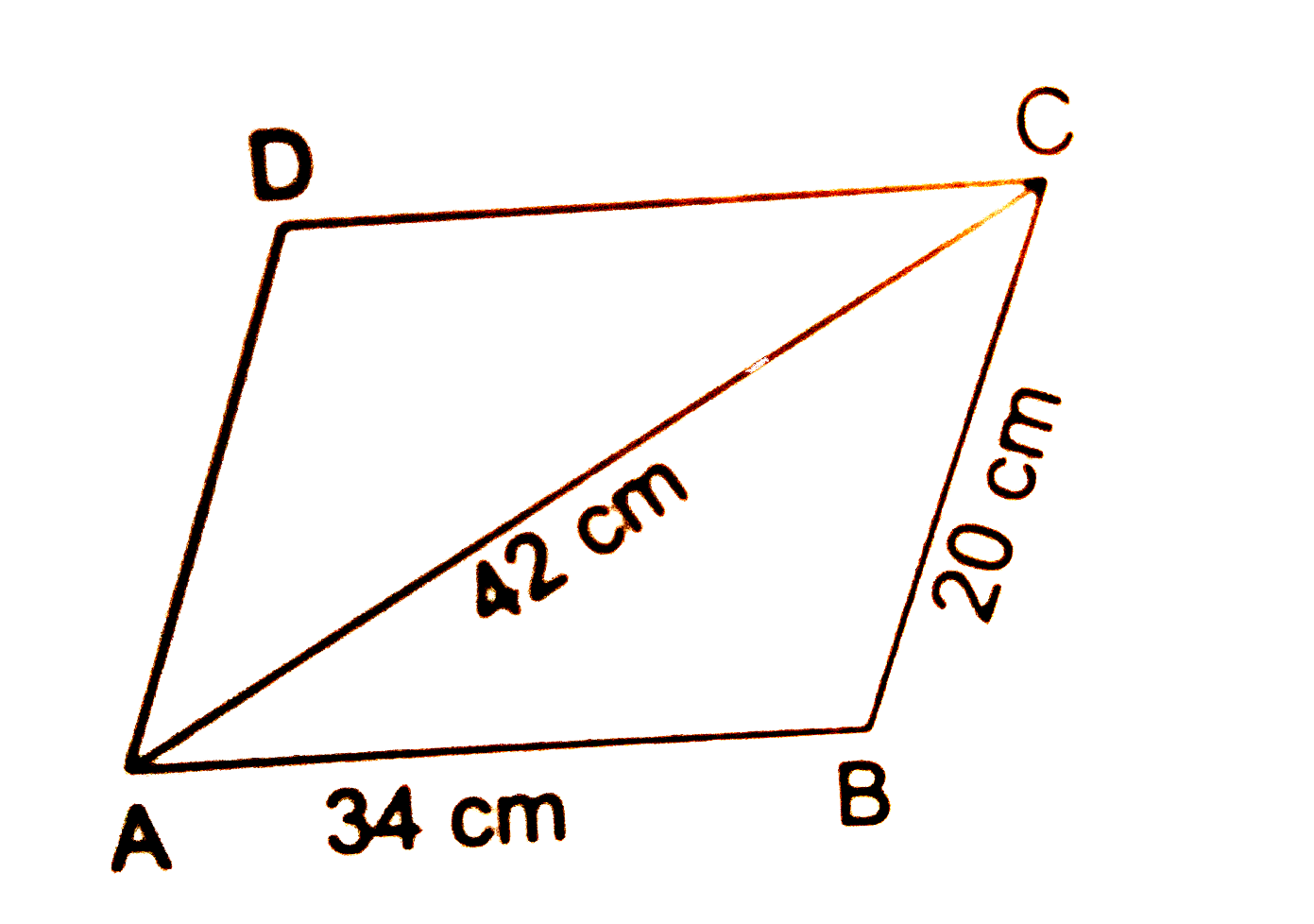
View SolutionFind the area of the parallelogram ABCD in which BC = 12 cm, CD = 17 cm and BD = 25 cm. Also, find the length of the altitude AE from vertex A on the side BC.
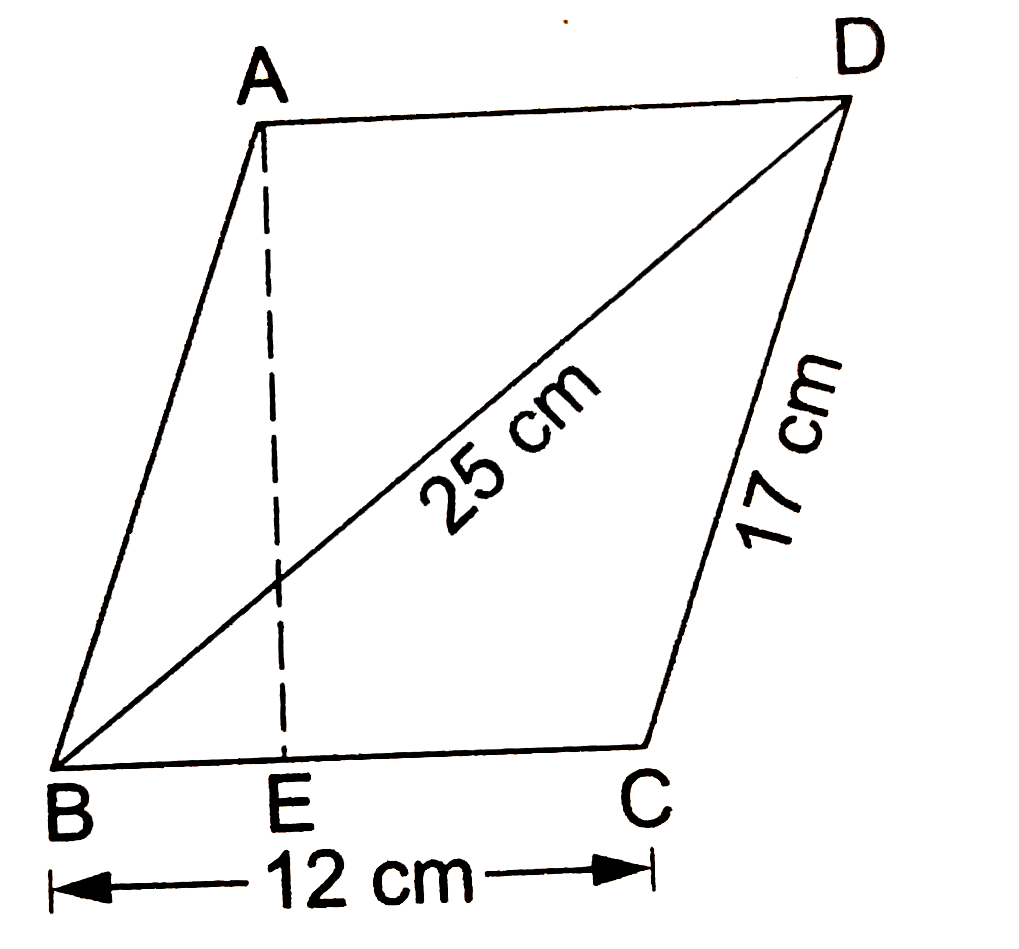
View SolutionIn the given figure, ABCD is a rectangle of length 51 cm and bredth 25 cm. A trapezium PQCD with its parallel sides QC and PD in the ratio 9 : 8 is cut off from the rectangle, as shown in the figure. If the area of the trapezium PQCD is `(5)/(6)`th part of the area of the rectangle, find the lengths QC and PD.
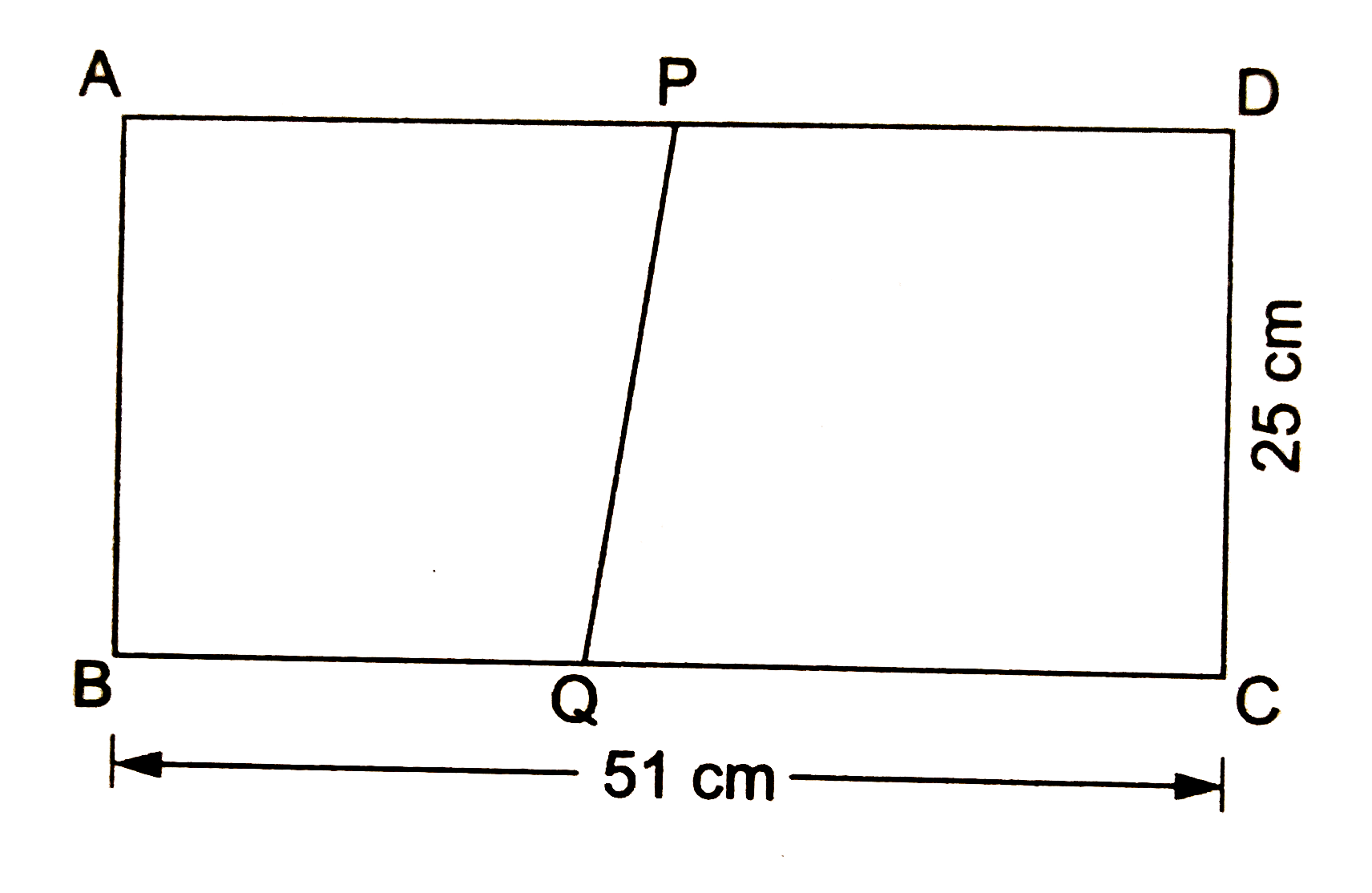
View SolutionA farmer has a triangular field with sides 360 m, 200 m and 240 m, where he grows wheat. Adjacent to this field, he has another triangular field with sides 240 m, 320 m and 400 m, divided into two parts by joining the midpoint of the longest side to the opposite vertex. He grows potatoes in one part and onions in the other part. How much area (in hectares) has been used for wheat, potatoes and onions ? (1 hectare = `10000 m^(2)`.)
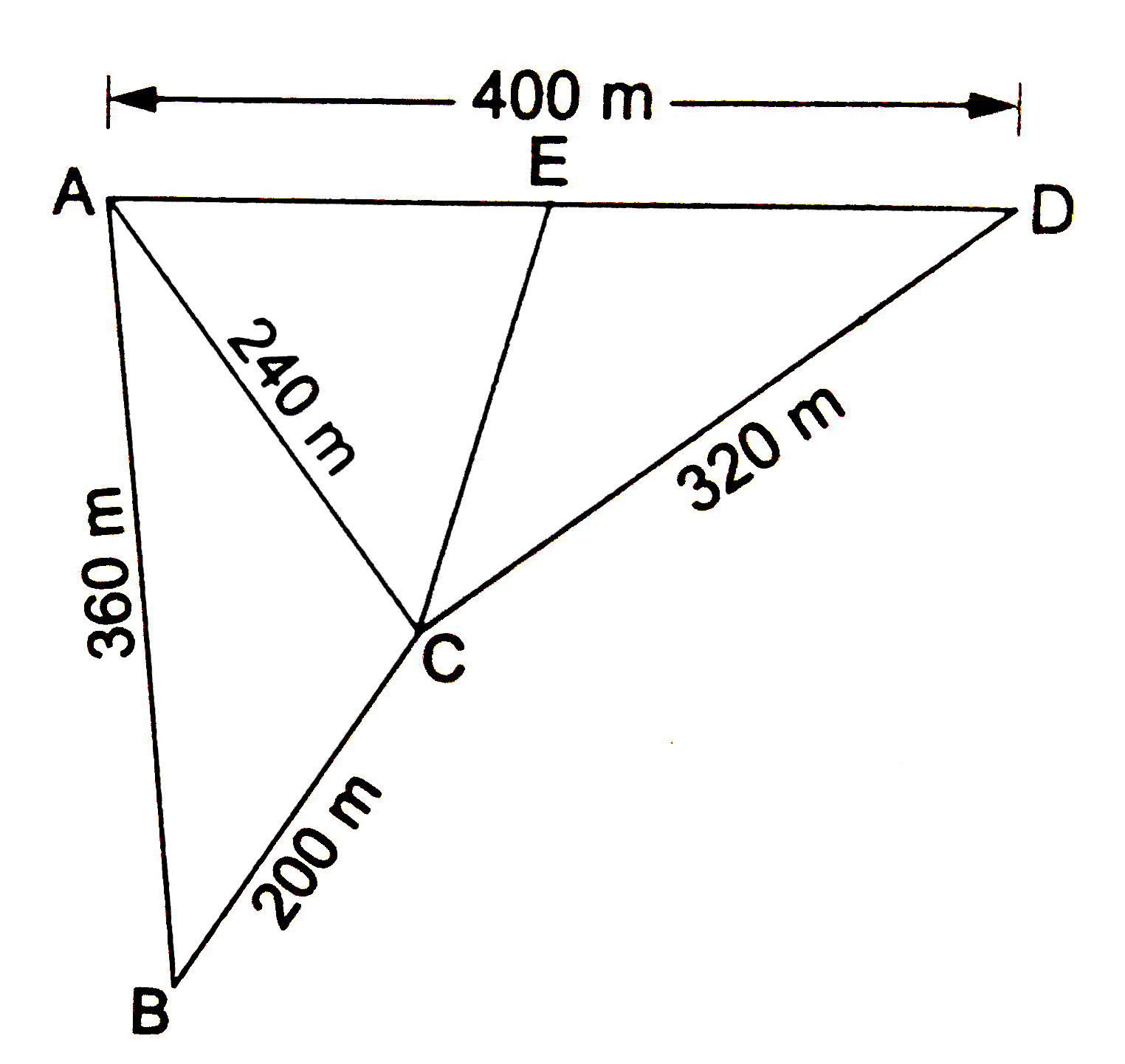
View SolutionRadha made a picture of an aeroplane with coloured paper as shown in figure. Find the total area of the paper used.
View SolutionA kite in the shape of a square with a diagonal 32 cm and an isosceles triangle of base 8 cm and sides 6 cm each is to be made of three different shades as shown in the figure. How much paper of each shade has been used in it ?
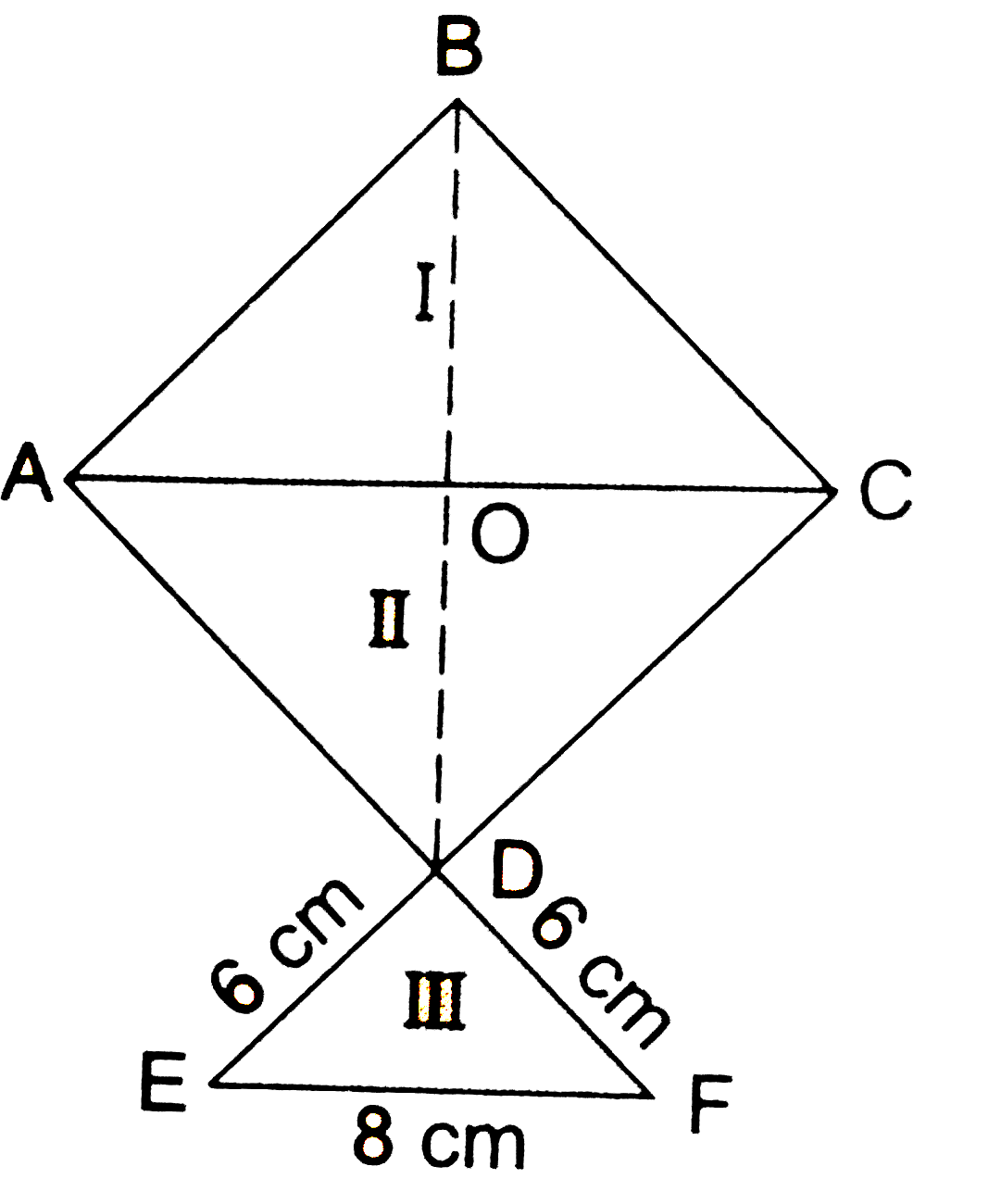
View Solution
EXAMPLE questions and complete solutions for chapter AREAS OF TRIANGLES AND QUADRILATERALS of RS AGGARWAL MATHS (HINGLISH) of Class 9